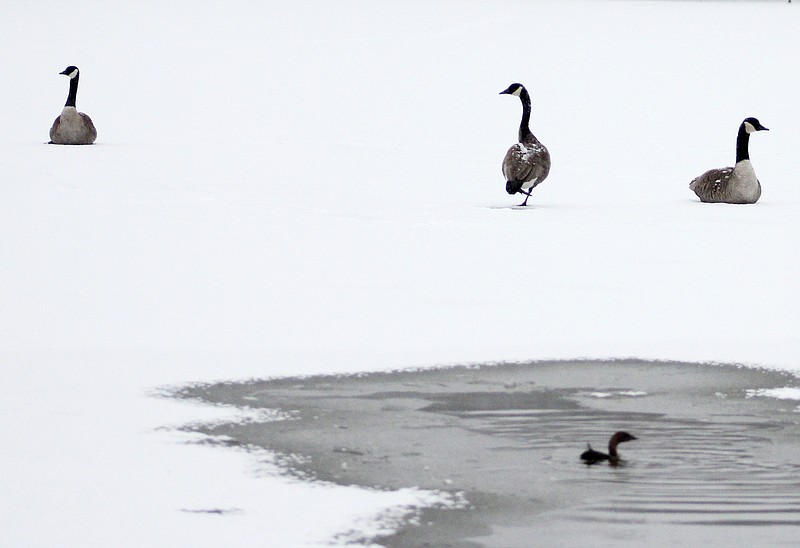Up in the skies, nestled in trees and floating on rivers and ponds, Missouri is full of birds winging south for the winter.
Missouri Department of Conservation naturalist Holly Balassi spoke about some of Missouri's migratory birds during a virtual program Monday evening.
There are several easy to guess reasons why birds migrate, such as winter weather and availability of food.
"They're going to have to fly somewhere where the vegetation is bright and plentiful and green and colorful and they're going to be able to have a variety of food sources for them," Balassi said.
But one you might not guess is light.
Shorter days during northern winters leaves less time for a bird to find food.
"They need all day to be able to get food, so that light - getting darker earlier - is not great for the birds," Balassi said.
Other species migrate south for breeding purposes.
"If they're not in that location where they breed, they're going to fly to that location where they need to breed because that's what they have been doing for years and years and it just gets passed down from generation to generation," Balassi said.
To get from place to place, birds have a remarkable internal compass.
"This is my most favorite thing that I learned about birds This just made me have a whole new level of respect for birds that I did not have before," Balassi said.
Depending on the species, birds rely on sight, smell and even magnetic fields.
In the skies above Missouri, waterfowl travel north and south in the Mississippi Flyway, which follows the Mississippi and its major tributaries, including the Missouri River.
"A flyway is basically just a bird highway in the sky," Balassi said.
At least 330 types of birds are recorded in the state every year. Other birds, including the extinct passenger pigeon, once flew over Missouri but are now gone from its skies.
The Canada goose is one of the species that migrates over local skies - though some populations stay year-round, like the feathered inhabitants of Truman Lake in Fulton.
From bill to tail, Canada geese can reach a size of 48 inches. On the other end of the size spectrum is the 3.75 inch ruby-throated humming bird. Most of the ruby-throated hummingbirds have already made it through Missouri and won't back until the spring.
Cardinals, robins and chickadees are also permanent residents. Balassi suggested leaving out bird feeders in the winter.
"I at one time looked out my window in my backyard and I believe I counted almost 20 cardinals just hanging in my yard," Balassis said. "It was beautiful."
Balassi also discussed species that don't typically follow a migration route over Missouri, but are have been sighted on rare occasions.
This summer, a brown booby was sighted in the Ozarks. It was the first recorded sighting of the large seabird in Missouri. The sighting thrilled birders.
Prospective birders can learn about more common species online at nature.mdc.mo.gov/discover-nature/field-guide/search.
A virtual program abou woodpeckers is scheduled for Dec. 5 and Dec. 11 MDC will hold a virtual program on winter birds. The full list of MDC events can be found at mdc.mo.gov/events/virtual.

